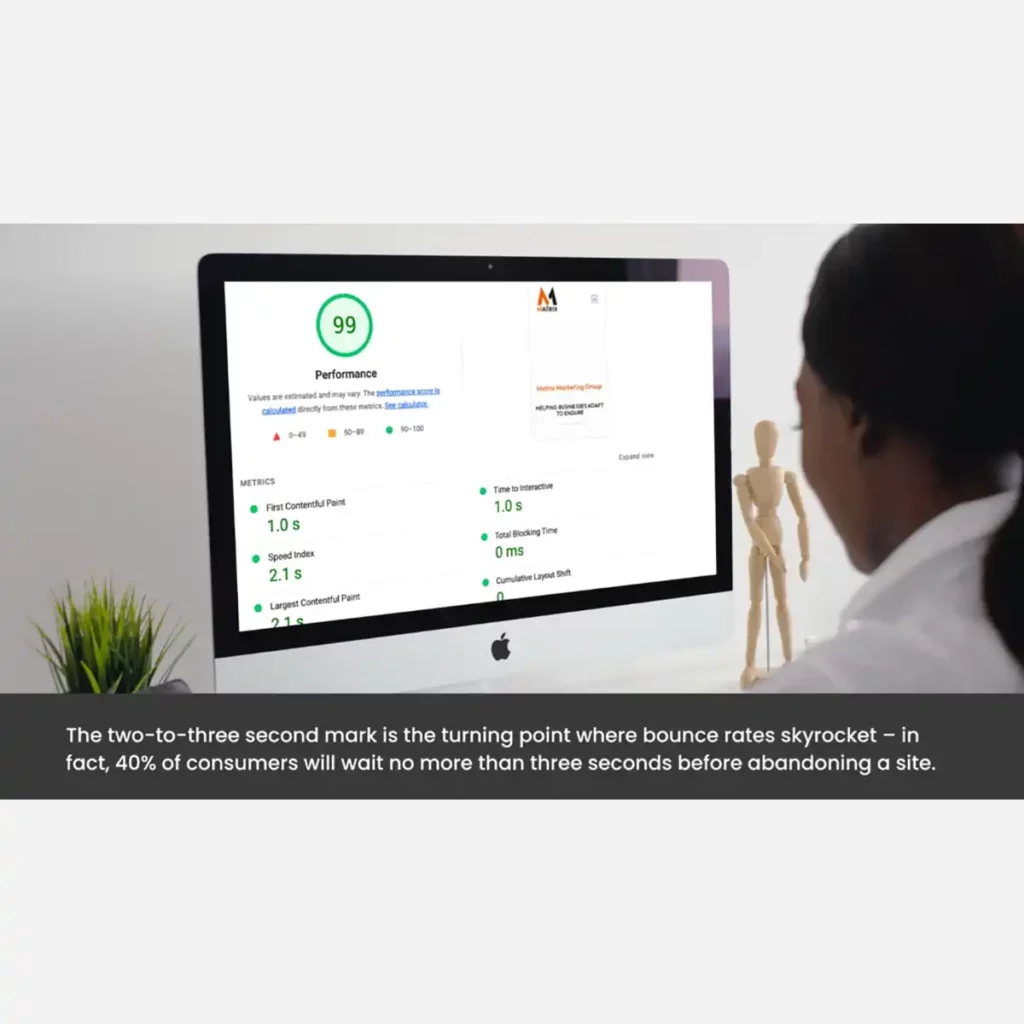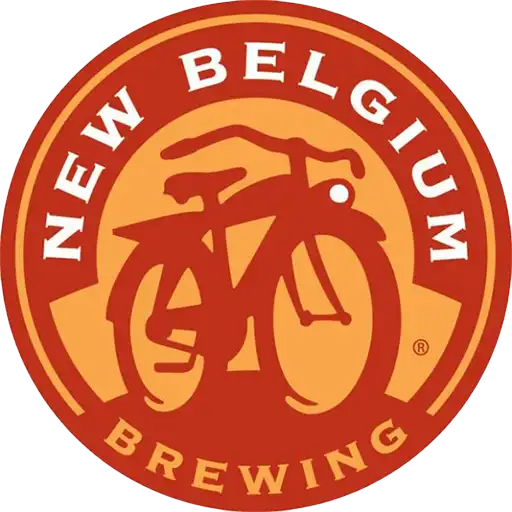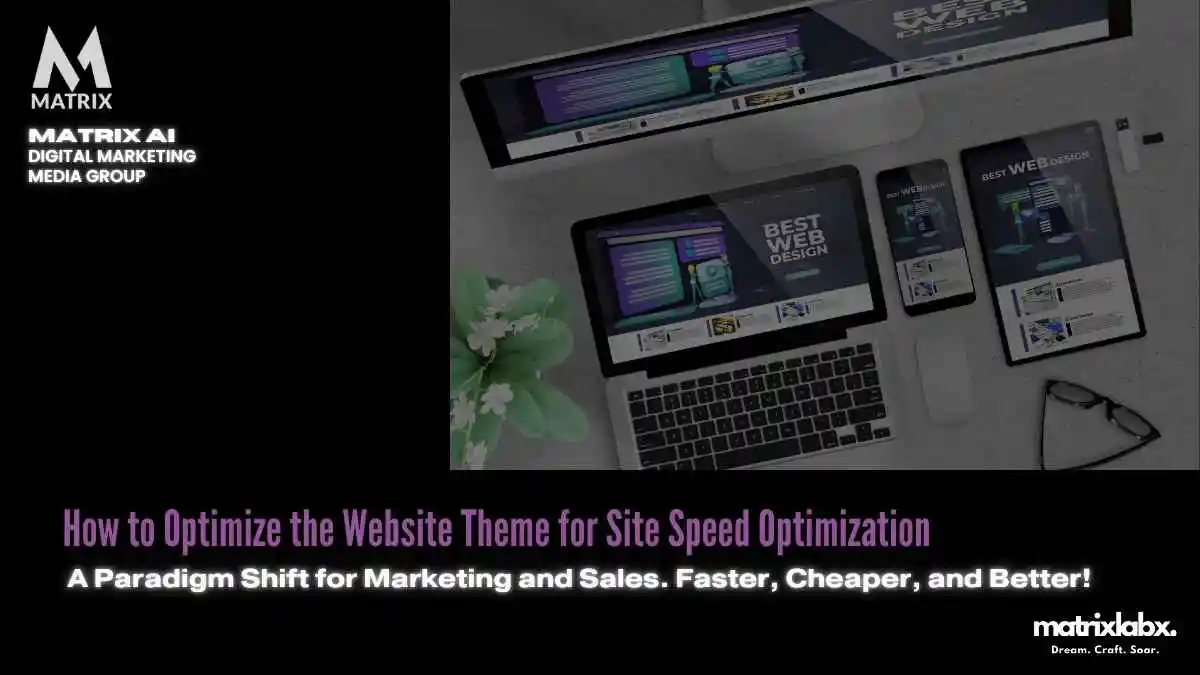How to Optimize the Website Theme for Site Speed Optimization
Learn How to Optimize the Website Theme for Site Speed Optimization for More Sales.
Introduction The Evolution of Search and Site Speed
Imagine waiting over 10 seconds for a website to load each time you click on a search result. This was a common frustration for many netizens only a decade ago.
However, today, speed is king. Recent data reveals that 47% of consumers expect a web page to load in 2 seconds or less, and a 1-second delay in page response can cause a 7% reduction in conversions (MatrixLabX, 2025).
This dramatic shift underscores the critical importance of optimizing website speed in the ever-evolving landscape of digital user expectations.
Background on Site Speed Optimization
Site speed optimization is a cornerstone of web development and digital marketing strategies. It refers to improving the loading time of web pages, enhancing user experience, and increasing site visibility.
Faster websites retain visitors and improve search engine rankings, as speed is a known ranking factor for major search engines like Google.
Techniques in site speed optimization encompass a wide array of actions, from minimizing the size of image files and reducing server response times to leveraging browser caching and optimizing code.
This process begins at the foundation of a website’s design—its theme. The theme plays a pivotal role in determining its load time. A heavy theme with large files, complex scripts, and inefficient code can significantly degrade a site’s performance.
Conversely, a well-optimized theme can be a robust base for fast-loading pages.
Given the importance of speed in today’s digital landscape, this article will explore optimizing website themes for speed.
How to Optimize the Website Theme for Site Speed Optimization explores practical strategies and guidelines for refining your website’s thematic elements to enhance its performance.
By the end of this article, you will be equipped with the knowledge to select, modify, or even create a theme that appeals visually and excels in speed, thereby supporting broader site speed optimization efforts.
Optimizing Your Website Theme for Site Speed: A Comprehensive Guide
In today’s fast-paced digital landscape, ensuring that your website loads quickly is essential for user experience and search engine ranking.
Site speed optimization focuses on reducing load times and improving performance. Optimizing your website’s theme is one key aspect of achieving this.
Who Should Optimize? Website owners, developers, and marketers all have a stake in site speed. If you manage a blog, an e-commerce site, or a portfolio, the user experience can significantly impact visitor retention and conversion rates.
What is Theme Optimization? Theme optimization involves modifying your website’s theme to enhance speed and performance. This includes minimizing the number of HTTP requests, optimizing images, and leveraging browser caching.
A well-optimized theme ensures your site runs smoothly, minimizing bounce rates and keeping users engaged.
Where to Start? Analyze your site speed with tools like Google PageSpeed Insights, GTmetrix, or Pingdom. These platforms will provide insights into what elements of your theme are slowing down your website.
How to Optimize Your Theme? Here are some effective strategies to optimize your website theme for better speed:
- Choose a Lightweight Theme: Consider switching to a theme designed for speed, minimizing excess features and bloat.
- Compress Images: Use tools like TinyPNG or ImageOptim to reduce image sizes without compromising quality.
- Minimize JavaScript and CSS Files: Combine and minify your scripts and stylesheets to reduce load times.
- Use Asynchronous Loading: Implement lazy loading for images and asynchronous scripts to prevent them from blocking page rendering.
- Implement Caching: Use caching plugins that can serve static versions of your site to users, drastically improving load times.
These steps can significantly improve your website’s load speed, enhance user satisfaction, and drive more traffic.
Improving site speed is not just a technical requirement; it’s crucial for business success in the digital world. Start optimizing today!
Imagine you’re preparing for a huge, glamorous marketing event. The venue is spectacular, the guests are high-profile, and the expectations are sky-high.
But there’s a catch: the entrance is narrow and cluttered, causing frustrating delays as guests try to enter. This bottleneck dampens the initial excitement and could deter some guests from attending future events.
Optimizing your website theme for speed is akin to streamlining that cluttered entrance. Just as you’d ensure a smooth, wide entryway to keep guests happy and flowing in smoothly, optimizing your site involves simplifying and speeding up how quickly your website loads for visitors.
This could mean minimizing heavy graphics, leveraging better hosting solutions, or tweaking the code that underpins your site.
For marketing managers, consider each visitor a VIP guest at your event. You wouldn’t want them waiting at the door, right? A fast-loading site ensures they step into the experience you’ve crafted without delay, ready to be engaged and converted.
Just like a well-managed event leaves guests satisfied and likely to return, a speed-optimized website creates a swift, seamless first impression, encouraging visitors to stay longer and engage more deeply.
Challenges and Opportunities in Optimizing Website Themes for Site Speed

Importance of Site Speed Optimization
Before delving into the challenges and opportunities, it is crucial to understand why site speed optimization is essential. A fast-loading website enhances user experience, reduces bounce rates, and can significantly improve search engine rankings.
With more users accessing websites via mobile devices and varying internet speeds, a quick, responsive site is no longer optional; it’s necessary.
Studies show that even a one-second delay in load time can reduce conversions by 7%, making speed optimization a strategic priority for any online business.
Challenges
- Complexity of Themes: Many modern website themes have features and functionalities to enhance user engagement. However, these complex themes often include heavy scripts, large images, and numerous plugins that can slow load times. Optimizing these themes requires a careful balance between functionality and performance.
- Code Bloat: Over time, themes can accumulate unnecessary code, including unused CSS and JavaScript, contributing to increased loading times. Identifying and removing this bloat can be tedious and technical, requiring a good understanding of coding practices.
- Cross-Compatibility Issues: Different browsers and devices render websites differently. Ensuring that speed optimizations do not inadvertently cause platform compatibility issues can be challenging. Developers must rigorously test changes to maintain a consistent user experience.
- Image Optimization: High-resolution images are essential for visual appeal but can drastically affect load times. Properly optimizing images (compressing them without losing quality, choosing the right formats, etc.) can be complex, especially for those unfamiliar with graphic design or coding.
- Balancing SEO and Speed: While optimizing for speed, it is essential not to compromise on Search Engine Optimization (SEO) practices. Some speed optimization techniques may conflict with SEO strategies, necessitating a careful approach to address both aspects simultaneously.
Opportunities
- Improved User Experience: Optimizing the website theme for speed can create a smoother, faster browsing experience for users. This improvement enhances user satisfaction and encourages repeat visits, increasing customer loyalty.
- Better Search Engine Rankings: Search engines like Google prioritize fast-loading sites. By investing in speed optimization, businesses can improve their visibility in search results, attracting more organic traffic and potentially increasing conversions.
- Increased Conversion Rates: Faster load times have been directly linked to higher conversion rates. Businesses can capitalize on this opportunity to improve their bottom line by focusing on speed optimization. This is especially crucial for e-commerce websites where delays can directly impact sales.
- Competitive Advantage: In a digital landscape where many websites may be slow or cumbersome, having a fast-loading site can set a business apart. This competitive edge can be pivotal in attracting and retaining customers.
- Leveraging Modern Technologies: Optimizing a website theme often involves adopting modern web technologies and best practices, such as lazy loading, CDN (Content Delivery Network) integration, and asynchronous loading of scripts. Embracing these technologies can enhance site performance while future-proofing the website against evolving standards.
- Performance Monitoring and Continuous Improvement: Speed optimization is not a one-time task but an ongoing process. By regularly monitoring performance metrics and user feedback, businesses can identify areas for improvement and continually enhance the speed of their websites.
While optimizing a website theme for speed presents its share of challenges, the opportunities it creates for improved user experience, higher search engine rankings, and increased conversion rates are invaluable.
Businesses can significantly enhance their online presence and performance by understanding these dynamics and strategically addressing the obstacles.
Emphasizing speed optimization is not just about meeting user expectations; it’s about leveraging a critical aspect of web development to drive growth and success in an increasingly competitive digital marketplace.
Struggling to Keep Up with Content Demands?
In today’s digital landscape, creating consistent, high-quality content is more challenging—and more important—than ever. Without a clear plan and the right tools, your brand risks falling behind in the crowded marketplace.
Case Study About Optimize the Website Theme for Site Speed Optimization
Case Study 1: E-commerce Brand – FashionHub
Brand Description and Initial Planning
FashionHub is a mid-sized e-commerce brand specializing in trendy apparel for young adults. Initially, its website launched with a vibrant, image-heavy theme that showcased its products visually appealingly.
However, the brand quickly realized that its website was loading slowly, leading to high bounce and lower conversion rates. Their initial strategy focused heavily on aesthetics, neglecting the technical aspects of site speed.
Leveraging and Mitigating Failures
Recognizing the issue, FashionHub decided to take a comprehensive approach to optimize its website theme for speed. They conducted a full audit using tools like Google PageSpeed Insights and GTmetrix. The following steps were taken:
- Image Optimization: FashionHub implemented lazy loading for images, allowing only those in the viewport to load initially. They also compressed images without significant loss in quality.
- Theme Redesign: The brand simplified its theme by removing unnecessary animations and scripts, which caused slow download times. They opted for a more streamlined design that maintained aesthetics while enhancing performance.
- Minifying CSS and JavaScript: FashionHub used tools to minify their CSS and JavaScript files, reducing their size and improving loading speed.
- Content Delivery Network (CDN): They incorporated a CDN to serve static assets from locations closer to their users, which drastically reduced latency.
Lessons Learned
From their experience, FashionHub learned that while a visually striking website is important, it must be balanced with performance. Key takeaways included:
- Prioritize User Experience: Fast loading times directly affect user satisfaction and conversion rates. Aesthetic choices should not compromise speed.
- Regular Audits: Continuous monitoring of site speed is essential. They scheduled quarterly performance audits to ensure ongoing optimization.
- Testing Changes: Before fully deploying changes, they learned to conduct A/B testing to measure the impact on user behavior and site performance.
Case Study 2: Educational Platform – LearnSmart
Brand Description and Initial Planning
LearnSmart is an online education platform offering courses across various subjects.
When it launched, its site featured a complex theme with rich media content aimed at engaging students.
However, its heavy reliance on multimedia and dynamic content resulted in slow loading times, frustrating users, and leading to drop-offs during course registration.
Leveraging and Mitigating Failures
LearnSmart recognized the need for immediate action to improve their site speed. They adopted a multi-faceted approach to optimize their website theme:
- Reducing HTTP Requests: The team analyzed the number of HTTP requests made by their website and eliminated redundant requests. They consolidated multiple CSS and JavaScript files into single files to reduce load times.
- Mobile Optimization: With a significant portion of users accessing the platform via mobile devices, LearnSmart adopted a responsive design. They ensured mobile users experienced fast loading times with reduced content for smaller screens.
- Asynchronous Loading: They implemented asynchronous loading for non-essential scripts, which allowed the main content to load first, enhancing perceived speed.
- Performance Monitoring Tools: LearnSmart integrated real-time performance monitoring tools to track site speed metrics continuously and address any issues proactively.
Lessons Learned
LearnSmart’s journey emphasized the importance of speed in user retention and satisfaction.
The following lessons were gleaned from their optimization efforts:
- Simplicity is Key: A simpler design can be just as effective as a complex one. Stripping away excess features often leads to better performance without sacrificing usability.
- Mobile First: With increasing mobile traffic, ensuring mobile optimization is crucial for site speed and user engagement.
- User Feedback is Vital: Engaging users for feedback post-optimization helped LearnSmart understand their needs better and identify further areas for improvement.
Examining FashionHub’s and LearnSmart’s experiences reveals that optimizing a website theme for speed is a technical and strategic necessity.
Prioritizing user experience, conducting regular audits, and being responsive to user needs are all essential components of a successful speed optimization strategy.
Unlock Your Website’s Full Potential with a SEO Fix Program
Even the best websites can struggle without robust SEO. Our $2,500 SEO Quick Fix Package is crafted for businesses that demand fast, measurable results. We start with an in-depth SEO audit to diagnose your site’s performance, then implement five targeted optimizations to boost your rankings and drive more traffic.
Optimizing Website Performance And Speed
Matrix Marketing Group is at the forefront of leveraging advanced AI-driven digital marketing services, particularly optimizing website performance and speed.
In the context of the article on optimizing website themes for speed, Matrix Marketing Group recognizes that a well-optimized site theme is crucial for enhancing user experience and improving search engine rankings.
Their AI tools analyze website themes, identifying elements that may hinder loading times. By employing these insights, Matrix Marketing Group helps businesses streamline their website design, ensuring that themes are visually appealing but also lightweight and efficient.
This optimization process includes minimizing HTTP requests, compressing images, and leveraging browser caching—all vital components highlighted in the article.
Moreover, the agency emphasizes the importance of mobile optimization, as a significant portion of web traffic comes from mobile devices. Their AI solutions facilitate responsive design adjustments that cater to varying screen sizes without sacrificing speed.
In essence, Matrix Marketing Group’s AI digital marketing services align perfectly with the principles outlined in the article on site speed optimization.
By harnessing cutting-edge technology, they empower businesses to achieve faster loading times, resulting in lower bounce rates and increased conversions, ultimately driving growth and success in the digital landscape.
Best Website Theme For Speed Out of the Box
Here are 5 top-performing WordPress website themes optimized for speed, each with a unique value proposition to help you choose the best fit for your needs:
1. Astra
UVP: Blazing-fast performance out of the box, with full control over design via native WordPress Customizer and page builder compatibility.
- Loads in under 0.5 seconds.
- Pre-built site templates for Elementor, Beaver Builder, and Gutenberg.
- Lightweight footprint (<50KB).
2. GeneratePress
UVP: Lean, modular, and developer-friendly — ideal for creating fast, accessible sites with surgical control over every component.
- The core theme is less than 30KB.
- 100% PageSpeed and Lighthouse score ready.
- Built with SEO and WCAG-compliant HTML/CSS.
3. Neve
UVP: Mobile-first and AMP-compatible theme that scales from small businesses to enterprise-level performance requirements.
- Loads in under 1 second.
- Supports native AMP out of the box.
- Flexible header/footer builder.
4. Hello Elementor
UVP: Minimalist, a no-bloat theme built exclusively to supercharge Elementor websites.
- Ultra-lightweight — under 20KB.
- Designed for custom Elementor builds (no extra CSS or JS).
- Ideal for landing pages and one-page sites.
5. Kadence
UVP: Power meets speed — a powerful theme with advanced customization that doesn’t sacrifice load time or UX.
- Smart loading for JavaScript and CSS.
- Built-in performance enhancements (lazy loading, preload options).
- Seamless integration with WooCommerce.
Optimizing Your Website Theme For Speed Is Crucial
Optimizing your website theme for speed is crucial for enhancing user experience and improving search engine rankings.
Throughout this article, we’ve explored essential strategies such as minimizing HTTP requests, leveraging browser caching, and optimizing images and scripts. By implementing these techniques, you can significantly reduce load times and create a seamless browsing experience for your visitors.
The central thesis is clear: a well-optimized website theme boosts site speed and increases engagement and conversion rates. As online users become increasingly impatient, the speed at which your site loads can make or break their experience.
As you move forward, consider this: every second counts in the digital world. Take the initiative to regularly evaluate and optimize your website theme, keeping performance at the forefront of your strategy.
Challenge yourself to stay updated with the latest trends and tools for site speed optimization. Remember, a faster website is not just a technical advantage; it’s a pathway to building trust and loyalty with your audience.
Now is the time to act—optimize for speed and watch your website thrive. Stop and check your website speed now with Google’s website testing tool at Google PageSpeed Insights





